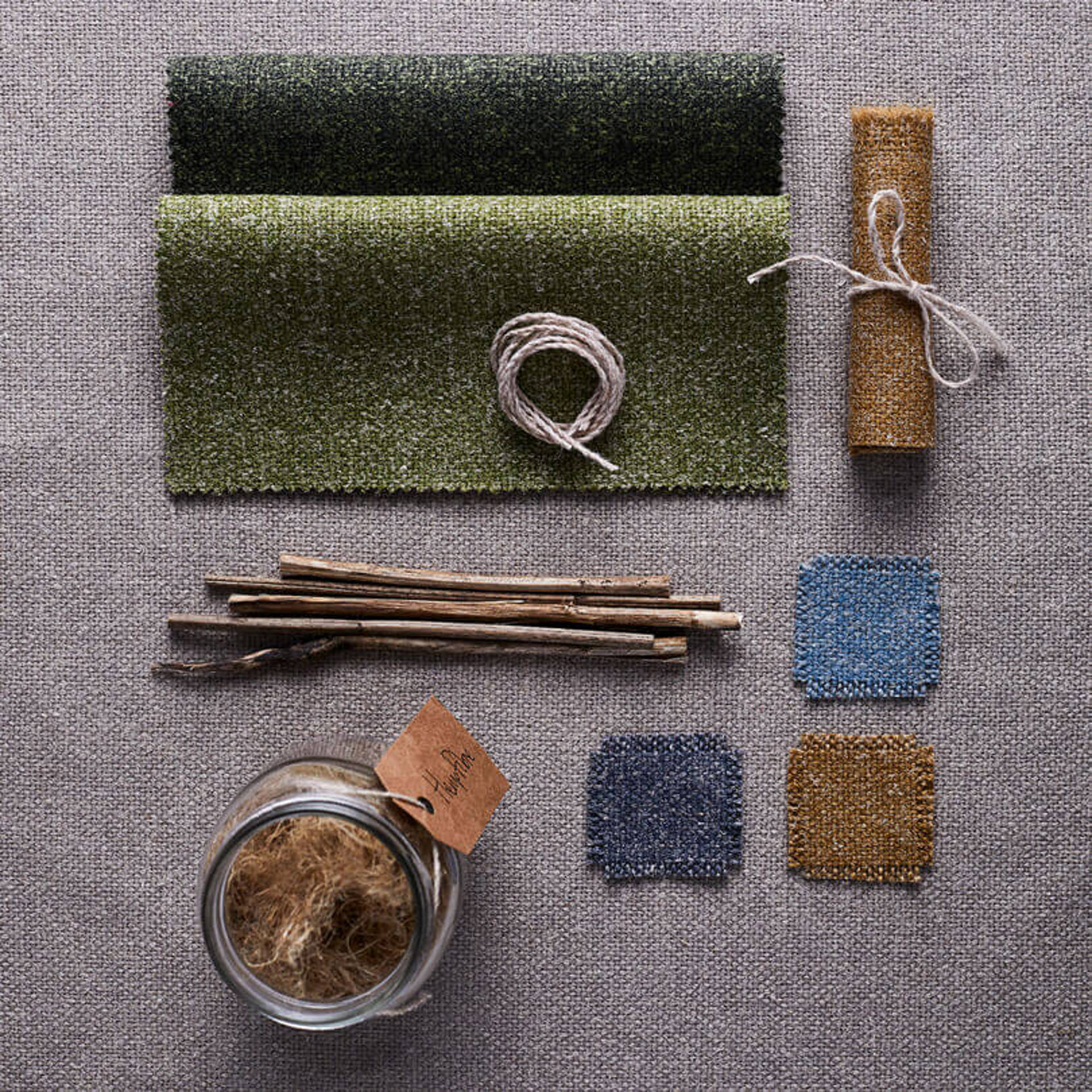Product Story
Hemp Fabric: An Eco-Friendly, Sustainable Textile
Harnessing the power of plants, Hemp is a fabric of homegrown beauty.
Perfectly natural, and naturally perfect, Hemp is one of the most environmentally friendly fabrics in our portfolio. First launched in 2012 as part of our pioneering innovation work into the use of plant stem fibers in textiles, Hemp has sold thousands of yards since its introduction, and plays a valuable role as a sustainable textile staple in commercial interiors.
With a soft handle and inherent flame retardancy, Hemp has a timeless woven aesthetic and an appealingly weathered finish that perfectly showcases its natural composition and multi-tonal coloration.
Order Samples
Our Hemp fabric begins life as an agricultural crop grown under license from the UK government Home Office on a farm in England. Using the Cannabis sativa strain, which contains only minute amounts of the psychoactive substance THC, the plants are sown from seed and reach over three yards in height in just 120 days.
Once grown, they are harvested, and the process of separating the stem’s fibers for spinning into yarn begins with dew retting – a natural way of allowing dew and rain to begin breaking down the tissues and pectins which surround the stem – which is then completed by mechanical decortication, during which the fine textile fibers are extracted from the heavier woody shiv. As Hemp is made using the long stem of the plant, the leaves are left behind to act as fertilizer, whilst the shiv is commonly used for building materials and animal bedding.
The hemp fibers are then blended with pure wool and spun together to create the yarn which is used to weave Hemp. When woven, the fabric is dyed into the 21 colorways which make up the range's palette, filled with organic tones which evoke its natural composition.

As Hemp is made using the long stem of the plant, the leaves are left behind to act as fertiliser, whilst the shiv is commonly used for building materials and animal bedding.
The hemp fibres are blended with pure wool and spun together to create the yarn which is used to weave Hemp. When woven, the fabric is dyed into the 21 colourways which make up the range's palette, filled with organic tones which evoke its natural composition.
100lbs of hemp seed provides enough fibre to make 5,400 yards of Hemp fabric.
What are the environmental benefits of Hemp?
An environmental super fiber, the benefits of Hemp extend across each stage of its lifecycle:
- Absorbs carbon dioxide: It is estimated that industrial hemp absorbs between 8 and 15 metric tons of CO2 per hectare of cultivation, whilst forests sequester between 2 and 6 metric tons.
- Naturally flame retardant: When blended together, the combination of wool and hemp provides inherent flame retardancy - with no additional chemical treatment required.
- Low impact: Requiring just 5kWh to produce 2lbs of textile fiber, in comparison to 69kWh to produce 2lbs of nylon, minimal energy is needed to produce hemp fiber.
- Biodegradable: Entirely compostable, Hemp doesn't have to be relegated to landfill, instead, it will biodegrade (in contrast to oil-based synthetics or recycled polyesters).
"Sustainable, renewable, and entirely compostable, Hemp is made to be used, loved, and returned to the earth."
Jodie Padgett, Senior Innovator at Camira
Loading......



